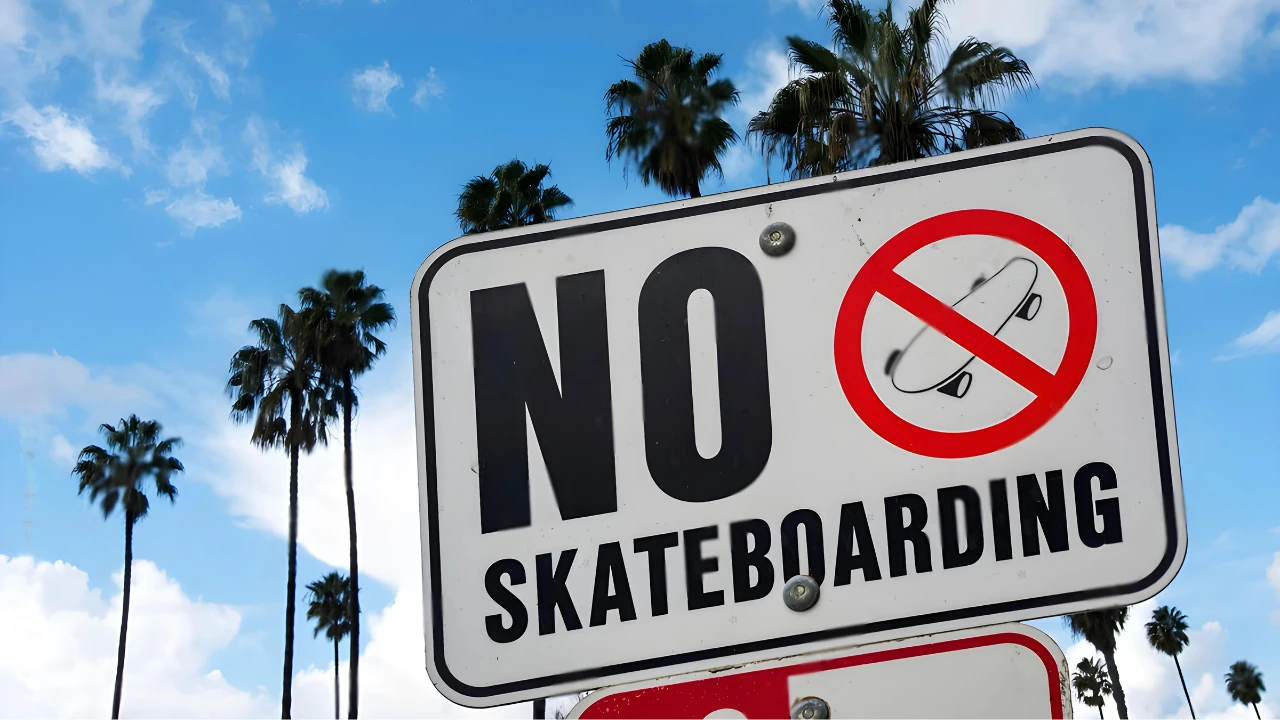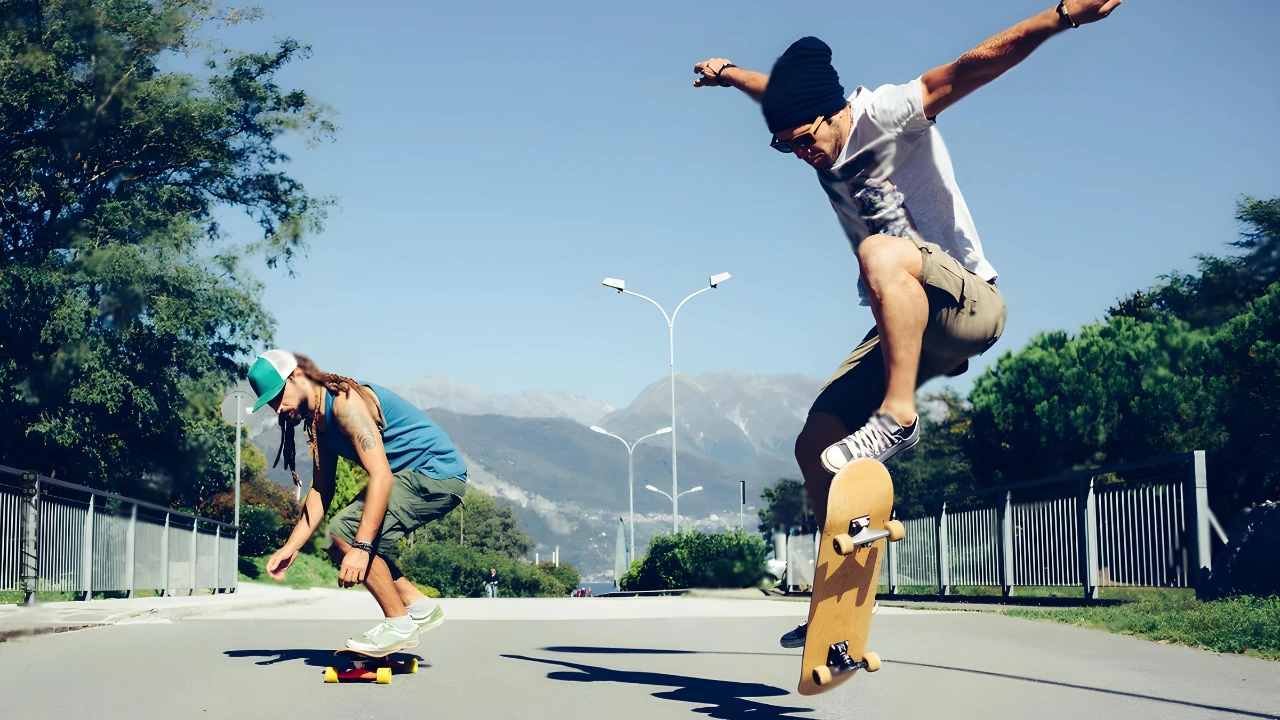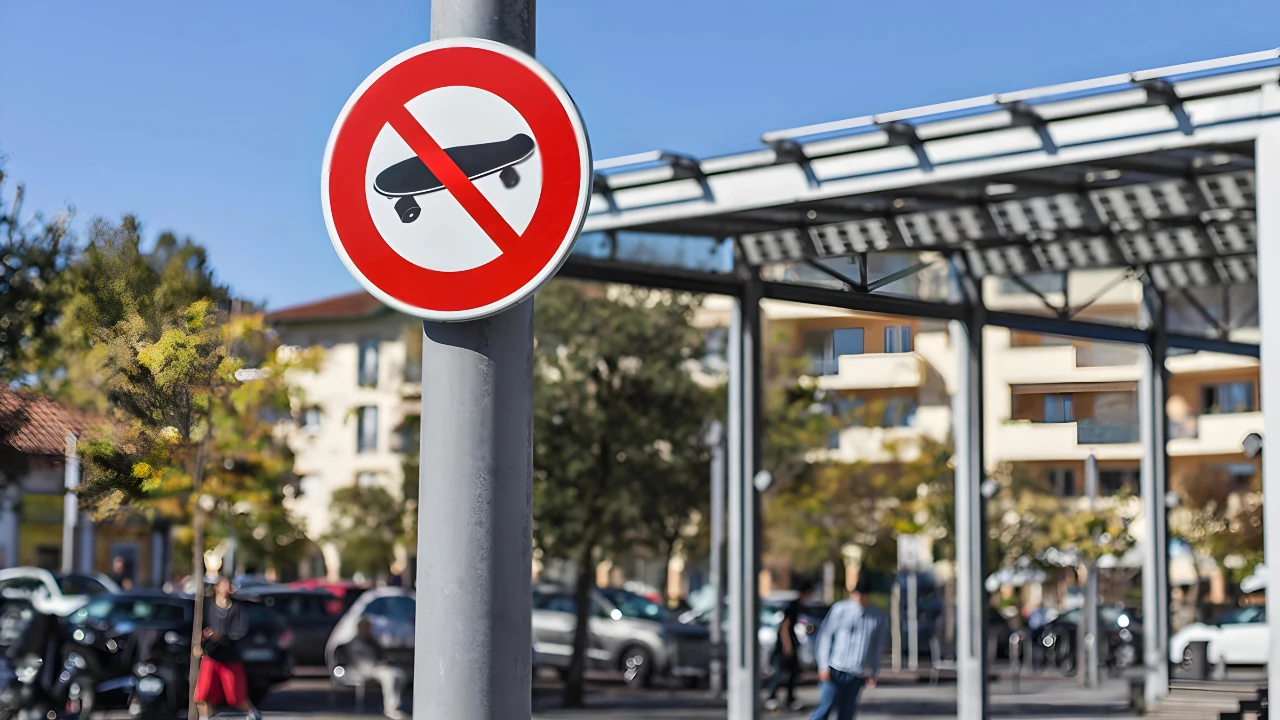Skateboarding is a dynamic and vibrant sport that has captured the hearts of millions of people all around the world. It has evolved from being a niche pastime to becoming a cultural phenomenon, which is truly remarkable. Despite its popularity, a perplexing question remains: why is skateboarding illegal in public places? This enigma reveals a complex tapestry of legal, societal, and practical considerations that shape the regulation of skateboarding.
Table of Contents
Understanding the Legal Landscape

Skateboarding’s legality varies widely depending on location. While some cities have designated skate parks and skate-friendly areas, others strictly prohibit skateboarding in public places such as streets, sidewalks, and plazas. The roots of these restrictions are often traced back to municipal ordinances and regulations aimed at maintaining public safety and preserving infrastructure.
Safety Concerns:
One primary reason for the prohibition of skateboarding in public places is safety concerns. Skateboarding poses risks not only to the skater but also to pedestrians, motorists, and property. Collisions between skateboarders and pedestrians can result in injuries, leading municipalities to prioritize pedestrian safety by banning skateboarding in areas with heavy foot traffic.
Damage to Property:
Another factor contributing to the illegality of skateboarding in public spaces is the potential for property damage. Skateboard wheels and decks can cause wear and tear on surfaces such as concrete, marble, and metal railings, leading to costly repairs and maintenance for municipalities. As a result, many cities opt to ban skateboarding in areas where property damage is a significant concern.
Liability Issues:
Legal liability also plays a role in the regulation of skateboarding. Municipalities fear lawsuits resulting from skateboarding accidents on public property, leading them to implement restrictive policies to mitigate their liability risk. By prohibiting skateboarding in certain areas, local governments aim to limit their exposure to legal claims related to injuries sustained by skaters or property damage caused by skateboarding activities.
Noise and Disruption:
The noise generated by skateboard wheels on pavement can also prompt complaints from residents and businesses, especially in urban areas. Skateboarding in public spaces may disrupt the peace and tranquility of neighborhoods, leading to noise ordinances and restrictions on skateboarding activities. Municipalities often balance the interests of skateboarders with those of other community members in addressing noise and disruption concerns.
Public Perception and Stereotypes:
Negative stereotypes associated with skateboarding, such as delinquency and vandalism, have contributed to its stigmatization in public spaces. Despite efforts by the skateboarding community to challenge these perceptions and promote skateboarding as a legitimate sport and form of self-expression, lingering biases persist among policymakers and the general public. These stereotypes can influence the enforcement of anti-skateboarding ordinances and shape public attitudes toward skateboarders.
Impact on Skateboarding Culture:
The prohibition of skateboarding in public places has significant ramifications for the skateboarding community. For many skateboarders, public spaces serve as essential venues for creative expression, socialization, and physical activity. Restrictions on skateboarding limit access to these spaces, constraining the growth and development of skateboarding culture. Moreover, the criminalization of skateboarding can lead to friction between skateboarders and law enforcement, exacerbating tensions within communities.
Alternative Approaches:
Despite the challenges posed by skateboarding in public spaces, some municipalities have adopted alternative approaches to accommodate skateboarders while addressing safety and liability concerns. Strategies such as the construction of skate parks, the establishment of designated skateboarding zones, and community engagement initiatives have shown promise in fostering positive relationships between skateboarders and local authorities. By providing designated spaces for skateboarding, cities can channel the energy and enthusiasm of skateboarders in ways that benefit both the community and the sport.
Some additional heading related to why is skateboarding illegal in public places

Legal Precedents and Court Decisions:
Examining cases where skateboarding in public spaces led to legal disputes and shaped subsequent regulations.
Municipal Ordinances:
Understanding the specific laws and regulations that govern skateboarding in different jurisdictions and their enforcement mechanisms.
Economic Impacts:
Assessing the economic consequences of skateboarding bans on local businesses, tourism, and property values in affected areas.
Public Opinion and Advocacy:
Analyzing public attitudes towards skateboarding and the role of advocacy groups in challenging anti-skateboarding policies.
Environmental Considerations:
Exploring the environmental impact of skateboarding on public spaces and efforts to minimize ecological damage through sustainable design and maintenance practices.
Cultural Significance:
Highlighting the cultural significance of skateboarding as a form of self-expression, art, and community bonding, and the implications of restricting access to public spaces for skateboarders.
Enforcement Challenges:
Discuss the challenges faced by law enforcement agencies in enforcing anti-skateboarding ordinances and the potential for alternative approaches to address skateboarding-related issues.
Youth Engagement and Recreation:
Examining the role of skateboarding as a recreational activity for youth and the importance of providing safe and accessible spaces for skateboarding to promote healthy lifestyles and social inclusion.
International Perspectives:
Comparing policies and attitudes towards skateboarding in different countries and regions and identifying best practices for managing skateboarding in public spaces on a global scale.
Future Directions:
Consider emerging trends in skateboarding culture, technology, and urban planning that may influence the regulation of skateboarding in public spaces in the future.
The best solution to overcome this problem – why is skateboarding illegal in public places

While each solution has its merits, the creation of designated skate parks stands out as the most effective approach to overcoming the problem of why skateboarding is illegal in public places. Here’s why:
Safe Environment:
Designated skate parks provide a controlled and safe environment for skateboarders to practice their skills without endangering themselves or others. These parks are purpose-built with features such as ramps, rails, and bowls designed to accommodate various levels of expertise, reducing the risk of accidents and injuries.
Legal Compliance:
By directing skateboarders to designated skate parks, municipalities can enforce regulations more effectively, ensuring compliance with safety measures and minimizing legal liabilities associated with skateboarding in public spaces. Clear signage and enforcement efforts can help deter skateboarding in prohibited areas while encouraging the utilization of designated facilities.
Community Engagement:
Skate parks serve as hubs for community engagement, fostering a sense of belonging and camaraderie among skateboarders and residents alike. These spaces provide opportunities for social interaction, recreational activities, and cultural events, promoting positive relationships between skateboarders, local authorities, and the broader community.
Cultural Recognition:
Designated skate parks acknowledge the cultural significance of skateboarding as a legitimate sport and form of self-expression. By investing in skateboarding infrastructure, municipalities demonstrate their commitment to supporting diverse recreational pursuits and fostering inclusivity within their communities.
Economic Benefits:
Skate parks can generate economic benefits for local businesses and tourism industries by attracting visitors, hosting events, and spurring development in surrounding areas. Additionally, the reduction of property damage in public spaces can result in cost savings for municipalities, offsetting the initial investment required to build and maintain skate parks.
Overall, the creation of designated skate parks offers a comprehensive solution to the problem of why is skateboarding illegal in public places. By providing safe, legal, and culturally relevant spaces for skateboarders, municipalities can reconcile competing interests, promote community well-being, and nurture the growth of skateboarding culture in a positive and sustainable manner.
FAQs about Why is Skateboarding Illegal in Public Places:
1. Why is skateboarding illegal in public places?
Skateboarding is often prohibited in public places due to safety concerns, potential property damage, liability issues, and cultural stigma associated with the activity.
2. What safety risks are associated with skateboarding in public areas?
Skateboarding in public spaces poses risks to both skateboarders and pedestrians, including collisions, falls, and accidents, especially in areas with heavy foot traffic or vehicular congestion.
3. How does skateboarding contribute to property damage?
The wheels and decks of skateboards can cause wear and tear on surfaces such as concrete, marble, and metal railings, leading to costly repairs and maintenance for municipalities and property owners.
4. Are there liability concerns related to skateboarding in public places?
Municipalities may face legal liability for skateboarding accidents on public property, prompting them to enact restrictive measures to mitigate the risk of lawsuits and protect public welfare.
5. Is there a cultural stigma associated with skateboarding?
Yes, negative stereotypes portraying skateboarders as delinquents or vandals have contributed to the stigmatization of skateboarding in public spaces, influencing public perceptions and policy decisions.
6. How can skateboarders advocate for their rights to use public spaces?
Skateboarders can advocate for the creation of designated skate parks, engage in community outreach and education efforts, and collaborate with local authorities to address safety concerns and promote responsible skateboarding.
7. Are there alternative solutions to banning skateboarding in public places?
Yes, alternative solutions include the construction of designated skate parks, the establishment of skateboarding zones, community engagement initiatives, and the enforcement of regulations in a fair and equitable manner.
8. How can municipalities balance the interests of skateboarders with those of the broader community?
Municipalities can balance competing interests by investing in skateboarding infrastructure, fostering dialogue between stakeholders, promoting responsible skateboarding practices, and addressing concerns through collaborative decision-making processes.
9. What role can education play in addressing the issue of skateboarding in public places?
Education can raise awareness about the benefits of skateboarding, promote safety guidelines and etiquette for skateboarders, challenge negative stereotypes, and foster understanding and tolerance within communities.
10. What are the potential benefits of accommodating skateboarding in public spaces?
Accommodating skateboarding in public spaces can promote physical activity, social inclusion, cultural expression, economic development, and community cohesion, enriching the quality of life for residents and visitors alike.
Conclusion:
The prohibition of skateboarding in public places reflects a complex interplay of safety considerations, liability concerns, public perception, and cultural attitudes toward skateboarding. While restrictions on skateboarding aim to mitigate risks and maintain order, they also pose challenges for skateboarders seeking opportunities for self-expression and recreation. By adopting a balanced approach that considers the needs of both skateboarders and communities, cities can create environments where skateboarding can thrive while addressing legitimate concerns about safety and public welfare. Ultimately, fostering dialogue and collaboration between stakeholders is essential to finding solutions that uphold the rights of skateboarders while promoting the well-being of the broader community.

